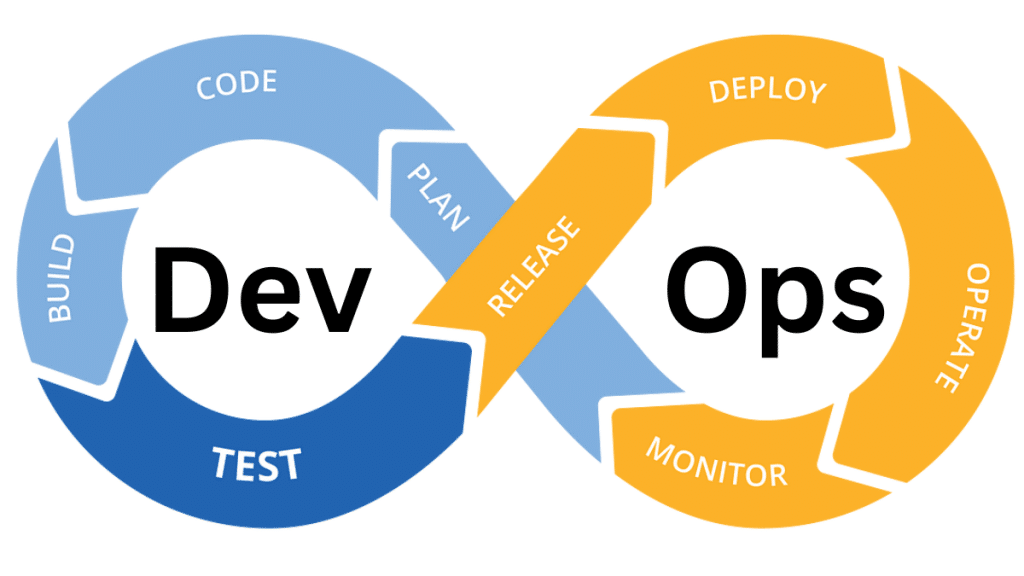Look, I’ll be straight with you. Five years ago, I was that guy who stayed late every other Thursday to babysit our production deployments. The one who got the 2 AM calls when something mysteriously broke in prod. The one with the permanent eye twitch Not anymore.
After our third straight deployment disaster (don’t ask about the database migration that took down our payment processing for six hours), our CTO finally said the magic words: “Maybe we should try this DevOps thing.”
DevOps Intro
Let’s start with the basics. What is DevOps really? You might think it’s just a buzzword, or a fancy label teams slap on their processes to sound modern. But here’s the truth: DevOps is a mindset shift. It’s about development and operations working together toward the same goal—faster, more reliable, and more secure software delivery. This isn’t just theory—it’s how we got our nights and weekends back.
What DevOps Actually Means (From Someone Who Hated the Term)
I used to roll my eyes whenever someone said “DevOps.” Another tech buzzword that consultants charge $300/hour to explain, right? Wrong. And I’ve never been happier to be wrong about something.
Here’s devops what is, from someone who’s lived it: No more finger-pointing between the people who write the code and the people who run it. No more “works on my machine” excuses. No more deployment days that feel like you’re disarming a bomb. The first time I watched code go from commit to production in 45 minutes with zero human intervention, I almost cried. For real. I went home at 5 PM on deployment day and my wife thought I’d been fired.
Starting Your DevOps Journey Without Losing Your Mind
If you’re where I was five years ago, you’re probably thinking: “Sounds great, but how the hell do I get there from here?” Fair question.
Here’s what worked for us and what should be part of your DevOps Roadmap: A Complete Guide for Beginners and Professionals.
1. Pick Your Biggest Pain Point (And Only That)
We started our deployment process because it was a nightmare. Not infrastructure-as-code, not fancy monitoring – just making deploys suck less. That single script prevented more problems than any enterprise software we’ve ever purchased. Sometimes, that’s what devops automation really looks like—practical, small wins that add up.
How DevOps Automation Transforms Software Development?
It reduces human error, accelerates delivery, and increases consistency. In our case, it turned a stressful 15-step manual deployment into a one-liner we could trust.
2. The Tools That Actually Matter
I’ve watched companies drop six figures on devops tools they didn’t need because some vendor convinced them it was the silver bullet. Don’t do that.
After years of trial and error, here’s what’s worth your time:
- Git
- Docker
- Jenkins/GitLab CI
- Terraform
This is your Ultimate DevOps Tools List for Modern DevOps Pipelines—a handful of tools that solve real problems. No hype. Just impact. Skip the fluff. Real devops services start with simplifying, not complicating.
3. You Can’t Automate Trust
The hardest part of our transition wasn’t technical—it was cultural. Bridging the gap between devops developers and ops teams took time and deliberate effort. That’s the beginning of Designing a Scalable and Efficient DevOps Architecture—one that’s resilient not because of complex tools, but because of shared ownership.
What The DevOps Lifecycle Actually Looks Like (Spoiler: It’s Messy)
Forget those neat circular diagrams. Real devops lifecycle stages don’t always happen in order and they’re rarely clean.
What Is the DevOps Lifecycle?
It’s a continuous process: Plan → Code → Build → Test → Release → Deploy → Operate → Monitor → Repeat. The first time we fixed an issue before a customer reported it, the support team sent us donuts. That’s the real power of a mature Devops lifecycle.
The Worst DevOps Disasters I’ve Seen (And How To Avoid Them)
I’ve made every mistake in the book, so you don’t have to. Skipping security? We learned the hard way. Now we prioritize Devops Development Services that integrate DevSecOps from the beginning.
Do You Actually Need DevOps Help?
Look, not every company needs to hire devops developers or bring in outside help. But if your infrastructure is chaos and your team dreads deployments, it might be time.
What are the Benefits of DevOps Development?
Faster releases, improved reliability, better scalability, tighter feedback loops—and, yes, happier teams.
How to Hire the Best DevOps Developers for Your Project?
Look for engineers who understand both development and infrastructure. Bonus if they’ve been through post-mortems and lived to tell the tale. Always ask for real-world examples, not just certifications.
Why Your Business Needs a DevOps Development Company?
Because internal teams are often too deep in the weeds to see what needs to change. A skilled DevOps development company brings outside perspective, proven frameworks, and faster transformation.
The Honest Truth
DevOps isn’t magic. It’s not even particularly complicated. It’s just a better, more collaborative way to build and ship software. My team now deploys dozens of times a day with almost no issues. We sleep through the night. We take vacations. We actually enjoy our jobs. If that sounds appealing, maybe this devops tutorial has inspired you to give it a shot.
Why Sapphire the Right Choice for DevOps Development Services?
At Sapphire Software Solutions, we don’t just talk DevOps—we implement it. Our seasoned Devops developers build automated pipelines, scalable infrastructure, and real-time monitoring systems tailored to your business needs. From startups to enterprises, our Devops development services deliver results on that scale.
